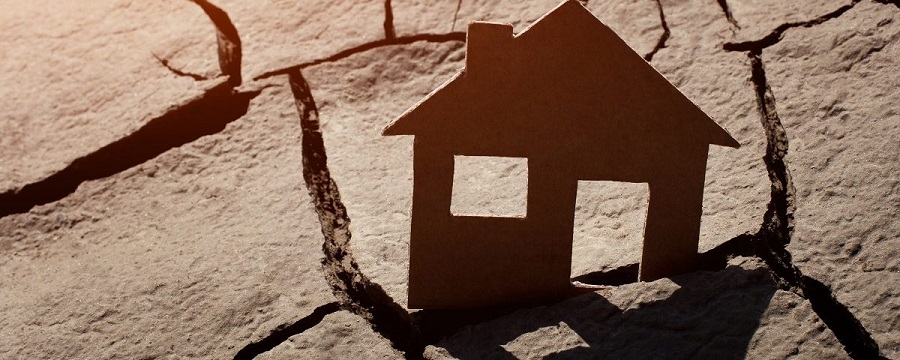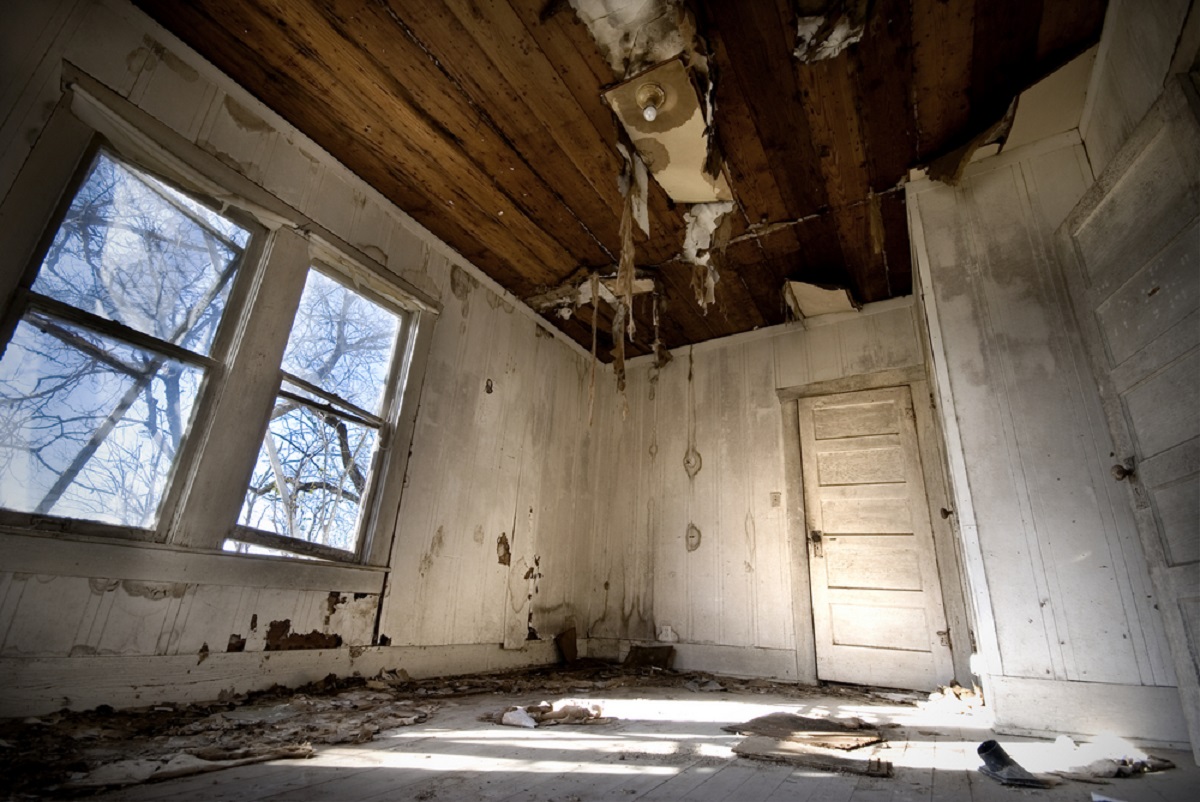Structural Damage: Causes & Expert Solutions to Protect Your Home

Last Updated: September 2024
Did you know that structural damage in your house could slash its value by as much as 20%? Learn how to spot the early warning signs and protect your property with our expert tips and strategies. Discover:
-
The top telltale signs of structural damage that most homeowners miss – and how to catch them early
-
The cutting-edge technology that can detect hidden damage in your home before it becomes a nightmare
-
Proven strategies to protect your property from the most common causes of structural damage
-
- What is Structural Damage
- Common Causes of Structural Problems
- Regional Factors Affecting Structural Damage
- 7 Ways to Spot Structural Damage to Your House
- Technology in Structural Damage Detection
- Effects of Structural Damage to Your Home
- How to Deal with Structural Damage Step by Step
- How to Prevent Structural Damage to Your Property
- Final Thoughts & Key Takeaways
What is Structural Damage
Structural damage happens when key parts of your home, like the foundation, walls, roof, or supporting beams, start to weaken or deteriorate.
These elements are important for keeping your house stable and safe. If they’re compromised, you could face anything from minor cracks in the walls to serious risks like a potential collapse.
Spotting and fixing structural faults early is key to preventing these issues from getting worse.
Common Causes of Structural Problems
-
Subsidence: This is when your home’s foundation starts to sink or settle downwards, often due to soil compaction, the removal of underground water, or natural ground movement.
Tree roots are believed to be responsible for around 70% of all subsidence cases, and the problem can worsen during prolonged dry spells, particularly in areas with clay-rich soil.
Subsidence can cause cracks in the walls, uneven floors, and gaps between the walls and ceiling. It can also impact load-bearing walls, which are necessary for keeping your home structurally sound.
-
Water leaks: Persistent water leaks can weaken the structural components of a building over time. Water can seep into the foundation, walls, supporting beams, and even roof timbers, causing them to rot or corrode.
In fact, water leak was the most common building insurance claim in the UK for 2023-2024, highlighting how widespread and damaging this issue can be. Over time, this can lead to a loss of structural integrity and, in severe cases, even a building collapse.
-
Tree roots and other plants: Tree roots can grow into the foundation of a building, causing it to crack and weaken. Additionally, trees can absorb large amounts of water from the soil, causing it to dry out and shrink, leading to ground movement and subsidence.
Aside from trees and invasive plants such as Japanese knotweed, homeowners are unaware that bamboo can cause significant damage, and it can even lead to legal disputes between neighbours or impact property sales.
Emily Grant, the operations director at Environet, a UK-based specialist in surveying and removing invasive plants, warns that "Bamboo is now being seen as the new Japanese knotweed."
Related read: What is Japanese Knotwood & How Can it Affect Me?
Regional Factors Affecting Structural Damage
When it comes to structural problems, where you live can significantly influence the types of issues your property might face. Here are some key regional factors to consider:
Climate-Specific Issues
-
Freeze-thaw cycles: Freeze-thaw cycles are common in regions with frequent freezing temperatures.
In these conditions, water seeps into cracks, freezes, and expands, which leads to the widening of cracks and material deterioration. This process particularly affects foundations, driveways, and exterior walls.
-
Humidity: Humidity is a concern in warmer, humid climates. High moisture levels in the air can cause wood to rot, promote mould growth, and lead to the corrosion of metal components.
Data suggest that between 4% and 27% of homes in England, or approximately 962,000 to 6.5 million households, are affected by damp and mould. These effects result in weakened structures, a sagging roof and floor, and warped walls.
-
Heavy rainfall and flooding: Regions prone to heavy rain or flooding often experience soil oversaturation, which increases pressure on foundations and can lead to subsidence.
32.43% of the UK’s annual rainfall typically occurs during the winter months (November to January), which is, on average, the wettest time of the year. Proper drainage systems are necessary to prevent water accumulation and structural problems.
Geological Considerations
-
Soil types: Clay soils expand and contract with moisture, causing foundations to shift and crack. In contrast, sandy soils may not provide adequate support, leading to settling or sinking.
According to Sigma Test and Research Center, the type and stability of soil are crucial factors in determining a building’s durability and safety.
-
Seismic activity: Seismic activity is common near fault lines and in regions with earthquake risks. Buildings in these areas need to withstand ground shaking by using flexible foundations and reinforced walls.
It's important to ensure your home meets local seismic building codes.
Local Building Practices and Their Impact
-
Construction materials: The choice of construction materials influences a building's resilience to environmental stressors.
For example, brick or stone used in rainy regions may be more susceptible to moisture damage if not properly sealed. Additionally, older homes may lack the structural resilience of newer constructions built to modern codes.
-
Building techniques: Traditional building methods may not be sufficient to address current environmental challenges. Shallow foundations, for instance, can lead to damage in areas with expansive soils or seismic activity.
7 Ways to Spot Structural Damage to Your House
1) Interior Problems
One of the most common issues homeowners face is internal problems caused by structural damage, which can come in many forms, shapes, and sizes. Although they can be relatively minor to costly, even property buying companies in the UK would conduct extra surveys and checks before offering to buy a property that had legitimate issues in this area.
To begin, we'll look at several possible interior problems that could suggest your property has foundation problems and then move on to the exterior and other areas of your home.
Below is a list of some of the most common interior issues to watch out for.
Windows and doors not opening and closing correctly – If the windows and doors in your home suddenly stop opening and closing correctly, it may be wise to get your home checked out for foundation movement. In addition, windows and doors not shutting properly can also be a potential security risk so be sure to get this fixed asap!
It's also worth mentioning that if you get new windows and doors installed, ensure they fit in nicely – not too tight and loose.
Cracks in the walls: Sometimes a crack means nothing but other times it could mean your house's foundations are shifting. In general, small hairline cracks are not a big issue, as most home foundations have a few.
It would be best to watch for big cracks between the ceiling and doors and those that appear around windows. Also, any large horizontal cracks that appear across walls are generally big indicators that your property has structural problems.
Spaces in the floor or uneven flooring: If you find that spaces are forming between your walls/ceiling and floors, then it would be safe to get it checked out right away as it may be due to foundation movement. The same applies to larger cracks on any floor.
Gaps Between the Floor & Walls: Another sign of structural damage related to your floors is if small gaps begin to form between them and the walls. The gaps don't have to be significant for the structure to be comprised, so keep an eye out when looking around your home.
Bowed Walls: Bowing or bulging walls are when walls begin to 'lean' or point out. Bowing walls are more common in older properties and can occur due to many reasons, some of which include the following:
- The original walls not being thick enough compared to the height of the building.
- Extended exposure to vibrations from heavy traffic or plant machinery.
- An increase in pressure from additional floors being added.
Related: 6 Types of Damp that could affect your home
2) Cracks in the Exterior Walls

When you're doing a check around your house's exterior, check for any noticeable cracks. You should look for any horizontal, vertical or zig-zag-like cracks, as these usually appear if your property suffers from structural damage.
Also, step back and look at your property from a little distance to ensure it is not sloping if you fear it may have foundation problems.
3) Walls Separating from the House

This is easy to spot and indicates that your property has foundation problems.
These cracks are generally huge and can appear all around the house's exterior. Under the windows, where the roof meets the wall and even where 2 walls join are all places where these large cracks can appear, indicating that your house is splitting apart.
4) Cracks in Bricks

Look out for cracks in the exterior and interior parts of the bricks, as either could be due to foundation problems. But, again, it's the more significant and horizontal cracks that you should look out for as well as cracks in masonry joints, as these are also a sign that your property's foundations are shifting.
5) Wall Rotation

Although wall rotation is not very common, it can still happen. It essentially means that the wall has rotated out of its place, resulting in walls splitting and causing massive damage to your property.
If you feel your property may have any problems listed above, you should contact a structural engineer as soon as possible. If you spot foundation problems early, you can save yourself a lot of money, as they only worsen over time.
6) A Cracked or Leaning Chimney

Cracks alone in your chimney probably won't mean your property has structural problems (although you should still get it checked out by a professional); however, if you notice it leaning or tilting slightly, that would suggest foundation failure.
This should be fixed as soon as possible as structural damage to your house is not only detrimental to your property, but it also carries substantial safety concerns as the chimney could fall over at any time.
7) The Front Porch or Stairs Begin Moving Away from the Home

Your front porch or the stairs leading into your home could indicate that your property has foundation issues. If you notice your porch starting to move away from your home or it comes slightly tilted, you should get in a professional as soon as possible to check it out.
Big cracks along the porch are also similar indicators that something is wrong.
Technology in Structural Damage Detection
Advancements in technology have revolutionised the way we detect and monitor structural damage, making it easier to identify potential issues before they become serious problems.
Here are some of the modern tools and techniques that are leading the way:
Modern Tools and Techniques
-
Thermal imaging: Thermal imaging cameras pick up temperature differences within a structure, helping to discover hidden problems like moisture intrusion, insulation gaps, and structural weaknesses that you can’t see with the naked eye.
-
3D scanning: This technology generates detailed digital models of a building's structure, making it especially helpful for spotting misalignments, deformations, and cracks that might not be obvious during a regular inspection.
Home Monitoring Systems for Early Detection
-
Smart sensors: Modern homes can now have smart sensors that monitor the building’s structural health around the clock. These sensors detect vibrations, shifts, and other signs of movement, giving homeowners or professionals real-time data on any changes.
-
Remote monitoring systems: With remote monitoring systems, you can monitor your home’s structural condition from anywhere. These systems send alerts about potential issues, like high moisture levels or unusual vibrations, straight to your smartphone or other connected devices so you can act quickly.
Emerging Technologies in Structural Health Monitoring
-
Artificial intelligence (AI) and machine learning: AI and machine learning are now part of structural health monitoring systems, which analyse large amounts of data from sensors and other sources. This helps predict potential structural issues before they become serious problems.
-
Drones and UAVs (Unmanned Aerial Vehicles): Drones with high-resolution cameras and sensors are increasingly used for structural inspections. They can easily reach difficult areas like roofs or tall structures and capture detailed images and data that might otherwise be hard to obtain.
Effects of Structural Damage to Your Home
Structural damage can have significant implications that extend beyond the immediate need for repair.
Impact on Property Value
Structural damage can significantly decrease the value of your property. Potential buyers are likely to offer less for a property with structural issues, as they will need to invest in repairs.
Additionally, structural damage can make it challenging to secure a mortgage on the property, further limiting the pool of potential buyers.
Safety Concerns
Structural damage can compromise the safety and stability of your property.
Cracks in the walls, uneven floors, and gaps between the walls and ceiling can indicate serious underlying issues that could lead to building collapse.
It is essential to address structural damage as soon as possible to guarantee the safety of the occupants.
Legal Implications
Depending on the severity of the structural damage and the local regulations, there may be legal implications for the property owner.
For example, the property may be deemed unfit for habitation, leading to eviction notices or fines.
Additionally, the property owner may be held liable for any injuries or damages caused by the structural damage.
How to Deal with Structural Damage Step by Step
Dealing with structural damage can be overwhelming, but it is necessary to address the issue as soon as possible to prevent further deterioration and ensure the safety of the occupants.
-
Assess the situation: Start by assessing the situation to determine the extent of the damage.
Look for signs of structural damage such as cracks in the walls, uneven floors, and gaps between the walls and ceiling. Make a note of the location and size of the damage.
-
Call a professional: If you suspect structural damage, it is always advisable to call a professional for a thorough assessment.
A structural engineer or a qualified building inspector can provide an expert opinion on the extent of the damage, the cause, and the necessary repairs. -
Address the cause: It is important to address the cause of the structural damage to prevent it from recurring.
For example, if the damage is caused by roof leaks, the leaks must be fixed before the structural damage can be repaired.
-
Repair the damage: Once the cause of the damage has been addressed, the next step is to repair the damage. This may involve underpinning the foundation, repairing cracks in the walls, or reinforcing the supporting beams.
A professional can guide you in the best course of action for your specific situation.
How to Prevent Structural Damage to Your Property
Preventing structural damage is always better than dealing with it after it occurs.
Regular maintenance and proactive measures can help prevent structural damage and save you time and money in the long run.
-
Regular maintenance: Regular maintenance is necessary to prevent damage. This includes checking for water leaks, clearing gutters and downspouts, and inspecting the roof and foundation for signs of wear and tear.
-
Tree management: Trees can cause structural damage if they are too close to your property. Manage the trees around your property by regularly trimming the branches and removing any trees that are too close to the foundation.
-
Proper drainage: Poor drainage can lead to water accumulation around the foundation, which can cause structural damage. Make sure that the ground slopes away from the property and that there are no areas of standing water.
-
Addressing minor issues promptly: Minor issues, such as small cracks in the walls or water leaks, can lead to more significant structural damage if left unaddressed. Address minor issues promptly to prevent them from escalating.
-
Regular inspections: Regular inspections by a professional can help identify potential issues before they become significant problems. It is advisable to have your property inspected by a qualified building inspector or structural engineer at least once a year.
Final Thoughts & Key Takeaways
Structural damage can severely impact your property's value, safety, and legal standing. Addressing any signs promptly is crucial to prevent further deterioration.
Key takeaways:
-
Be proactive: Regular maintenance, tree management, and proper drainage can prevent structural damage.
-
Address issues early: Fix small cracks or leaks promptly to stop them from becoming bigger problems.
-
Call a professional: If you suspect structural damage, get a professional assessment to determine the cause and necessary repairs.
Now it's your turn – Have you, as a homeowner, ever had a property that has suffered from structural issues? Share your story in the comments section below!
Need Help Selling Your House or Have a Question?
At Housebuyers4u, we specialise in buying homes "as is," making the process simple and stress-free. Our cash offers are grounded in local market knowledge and independent third-party valuations, ensuring you get a fair deal.
As direct cash buyers, we cut out the middlemen and mortgages, allowing for a fast and efficient sale. With a proven track record of hundreds of successful transactions, our experienced team is here to support you every step of the way, providing a smooth and hassle-free experience.




